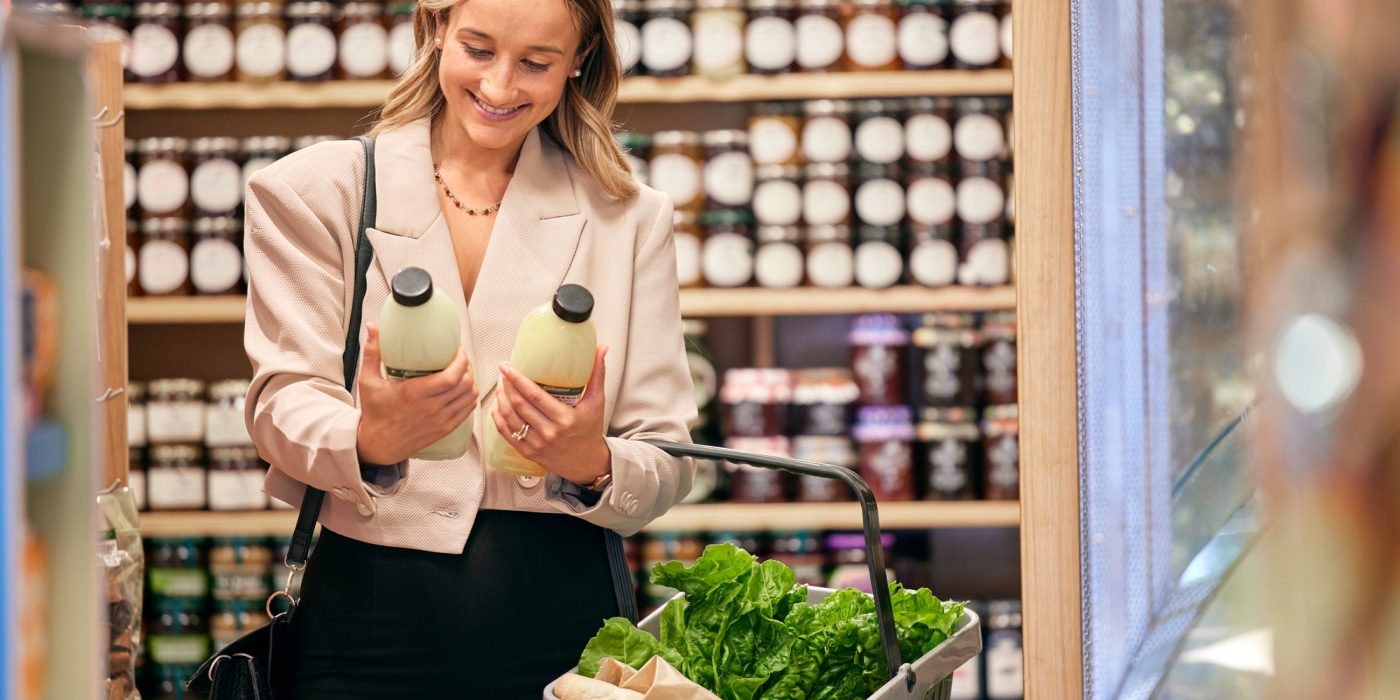How Consumer Behavior is Changing in Grocery Shopping
Consumer preferences are playing a pivotal role in shaping the landscape of grocery retail. From omnichannel shopping to budget-conscious decisions, consumers are becoming more informed, tech-savvy, and discerning in their shopping habits. They expect convenience, speed, and personalization, pushing grocers to rethink traditional business models. As technology advances and values shift, grocery retailers are adopting new strategies and technologies to meet the expectations of modern grocery shoppers.
Here’s a closer look at how consumer behavior is transforming the grocery industry and what retailers can do to stay ahead.
Shift Toward Omnichannel Experiences
While in-store shopping remains essential, more consumers are embracing online grocery shopping. Lower prices and the convenience of home delivery and curbside pickup have made digital grocery shopping a popular choice, with many consumers now preferring to shop across online and offline channels. Over 90% of shoppers participate in both online and in-store shopping, according to a new report, “Digital Engagement Transforms Grocery Shopping,” released by FMI and NielsenIQ.
In 2017, FMI and NielsenIQ predicted that by 2025, digitally engaged grocery shopper spending would reach $100 billion or 20% market penetration. This year’s report reveals that those projections were met and exceeded, with the report projecting U.S. online grocery sales to reach $388 billion or nearly 25% market penetration by 2027. As online shopping continues to grow, consumers expect seamless integration between in-store and digital experiences. Grocers must ensure frictionless omnichannel experiences, offering fast and efficient in-store and online solutions to meet increasing customer demand.

Growing Focus on Health and Wellness
Consumers are increasingly prioritizing nutrition, functional foods, and dietary preferences, leading to a surge in demand for healthier grocery options. Shoppers are seeking clean labels, plant-based and organic products, and personalized nutrition solutions. The growing focus on health and wellness is encouraging grocers to stock a wider variety of health-focused products, provide clear labeling to help consumers make informed choices, and dedicate in-store space towards health and wellness services that could enhance customer engagement.
Kroger Health has introduced OptUP Your Nutrition, a new free nutrition coaching program to help customers achieve their health and wellness goals through customized nutrition suggestions and tools to support healthier eating. The program provides Kroger Plus loyalty customers with a free 30-minute virtual nutrition coaching session with a Kroger Health registered dietitian. Registered dietitians will coach customers on healthy eating and budget-friendly and meal-planning recipe tips.
Budget-Conscious Shopping
With economic uncertainty and inflation, consumers are becoming more price-sensitive and strategic in their grocery shopping habits. Sixty-nine percent of consumers say they are very or extremely concerned with retail food inflation, with 79% of shoppers reporting that getting a “good value” when grocery shopping is their top priority, according to a report from FMI. Over 90% of shoppers reported having made at least one change in their grocery shopping habits to combat rising food prices, with the most common tactics including looking for more deals and purchasing store brands.
Private label sales achieved a new record last year, hitting $271 billion, according to Circana data cited by the Private Label Manufacturers Association. Refrigerated items, general food and beverages saw some of the highest growth. Major retailers are fueling sales growth with new store brand launches. To meet the growing demand for private label brands, grocers are investing substantially in developing new products and appealing to a broader customer base. Over 90% of grocers are planning on either moderately or significantly increasing their investment in private-label brands over the next two years, according to a report from FMI.

Demand for Convenience and Speed
Providing convenience, personalization, and flexible shopping methods will win over customers who have come to expect seamless grocery shopping experiences. With the help of data analytics and AI, grocery retailers can now offer tailored shopping experiences. Personalized product recommendations based on past purchases, health goals, or dietary restrictions are becoming common on retail websites and mobile apps, streamlining the ordering process.
Retailers are investing heavily in eCommerce platforms that offer convenience, speed, and flexibility, with services like same-day delivery and curbside pickup. Retailers are also partnering with third-party delivery services like Instacart, DoorDash, and Uber to meet customer expectations for faster deliveries. Automated fulfillment centers allow grocers to manage their fulfillment operations more efficiently and get products into customers’ hands quicker.
Consumer preferences are a powerful force driving the future of grocery retail. As more shoppers demand faster delivery, healthier options, personalized experiences, and smart savings, grocery retailers must adapt and evolve their strategies to stay competitive. By integrating automation and omnichannel experiences, grocers can enhance customer satisfaction and drive long-term loyalty.
For more information about how our delivery management solution can help you manage your delivery operations more efficiently, please contact info@bringoz.com.
